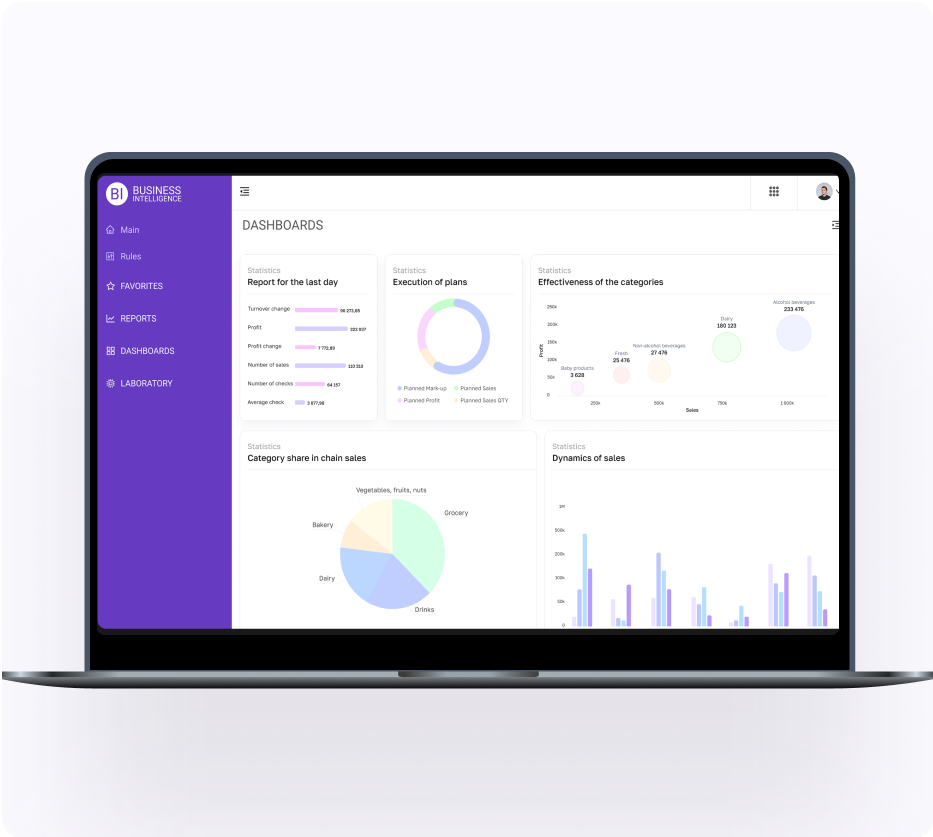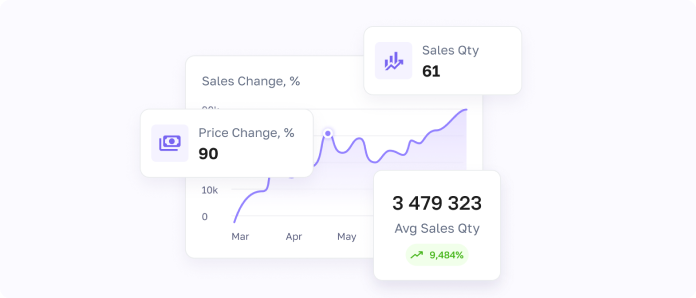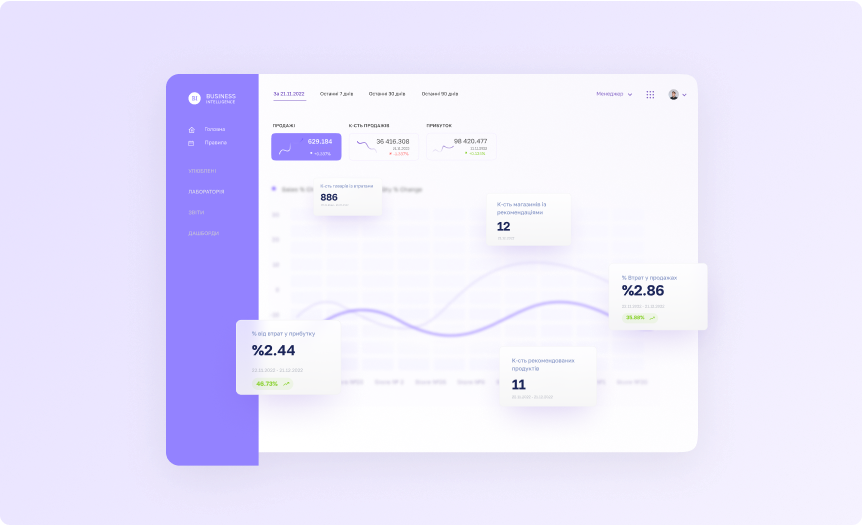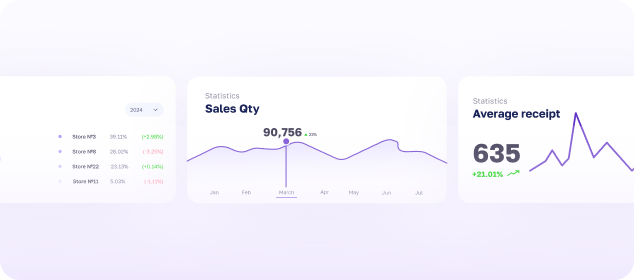Try the ready-to-use reports in the demo for free
Right now, you can try out over 30 custom reports, a dashboard builder, and use the formula builder for your individual calculations!


See the true impact of each product: the calculator provides quick insights into essential retail KPIs. Understand which items strengthen profitability and which ones hold it back.


Ready-to-use reports give you the full picture of sales: by products, categories, and brands. Spot top-performing SKUs and identify items that drag down profitability.
DetailsRight now, you can try out over 30 custom reports, a dashboard builder, and use the formula builder for your individual calculations!



